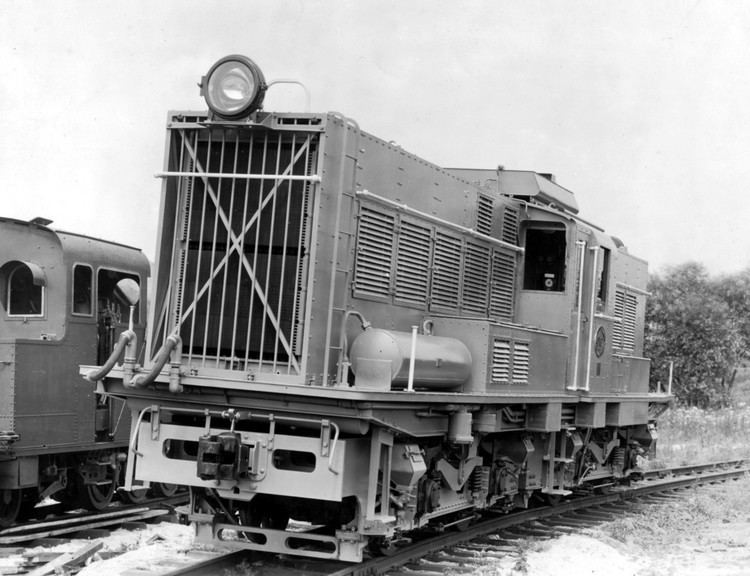Build date 1939 | Model SAR DS Total produced 1 | |
 | ||
Designer Allgemeine Elektricitäts-Gesellschaft Builder Allgemeine Elektricitäts-Gesellschaft | ||
The South African Railways Class DS of 1939 was a diesel-electric locomotive.
Contents
The first diesel-electric locomotive on the South African Railways was a single Class DS AEG diesel-electric shunting locomotive which was placed in service at the Congella yards near Durban in 1939.
Diesel-steam comparison
In c. 1935, the question of purchasing diesel locomotives for the South African Railways (SAR) was seriously considered. Even though South Africa was a coal-rich country with, at the time, the lowest pit-head prices in the world, and no oil wells, there were definite advantages in favour of the diesel-electric locomotive. It did not require to take water en route, could undertake very long runs without the need to refuel or change locomotives and had a much higher rate of availability.
The first costs were much in favour of steam locomotives, for which it decreased in cost per unit of power as the size increased, an advantage which the diesel-electric did not seem to have. Large diesel-electric locomotives of more than 1,500 horsepower (1,100 kilowatts) were usually three to four times greater in first cost than steam locomotives of equal power. In addition, unless it was supercharged, a diesel lost 3% of its rated power output with every increase of 1,000 feet (305 metres) in altitude.
As a result of the problems experienced to obtain adequate water supplies of good quality in the arid regions of South Africa and South West Africa, particularly on the section from De Aar via Upington to Keetmanshoop, the SAR decided to experiment with diesel-powered traction and introduced its first two diesel-electric shunting locomotives in 1939.
Manufacturer
The first of these was a single twin-engined centre-cab locomotive with a Bo-Bo wheel arrangement which was ordered from Allgemeine Elektricitäts-Gesellschaft (AEG) in Berlin, for use as a shunting engine. The locomotive was designated Class DS and was initially numbered D137, but it was soon renumbered to D513. Both numbers were in the electric locomotive number range, but with a "D" for diesel instead of an "E" for electric number prefix.
Characteristics
The 66 long tons 8 hundredweight (67,470 kilograms) locomotive was powered by two Maschinenfabrik Augsburg-Nürnberg (MAN) 265 horsepower (198 kilowatts) eight-cylinder diesel engine prime movers, one on either side of the cab. An AEG 110 kilowatts (150 horsepower) main generator and an AEG 12 kilowatts (16 horsepower) auxiliary generator were mounted directly in line between each engine and the cab. Each engine was water-cooled, with a fan which was belt-driven by its engine and which drew air through a conventional radiator.
The bogies were very similar to those of the Class 1E electric locomotive, each with two DC traction motors arranged in series. Each bogie axle was driven by a force-ventitated axle-suspended DC traction motor, with the two motors on each bogie electrically arranged in series. The cab was equipped with mechanically interlocked dual controls to enable operation in either direction.
Service
The locomotive was placed in service at the Congella yards near Durban but, performance-wise, the results were rather disappointing. The first diesel-electric locomotive on the SAR eventually found its way to Cape Town, where it was scrapped at the Salt River Works in November 1966.
